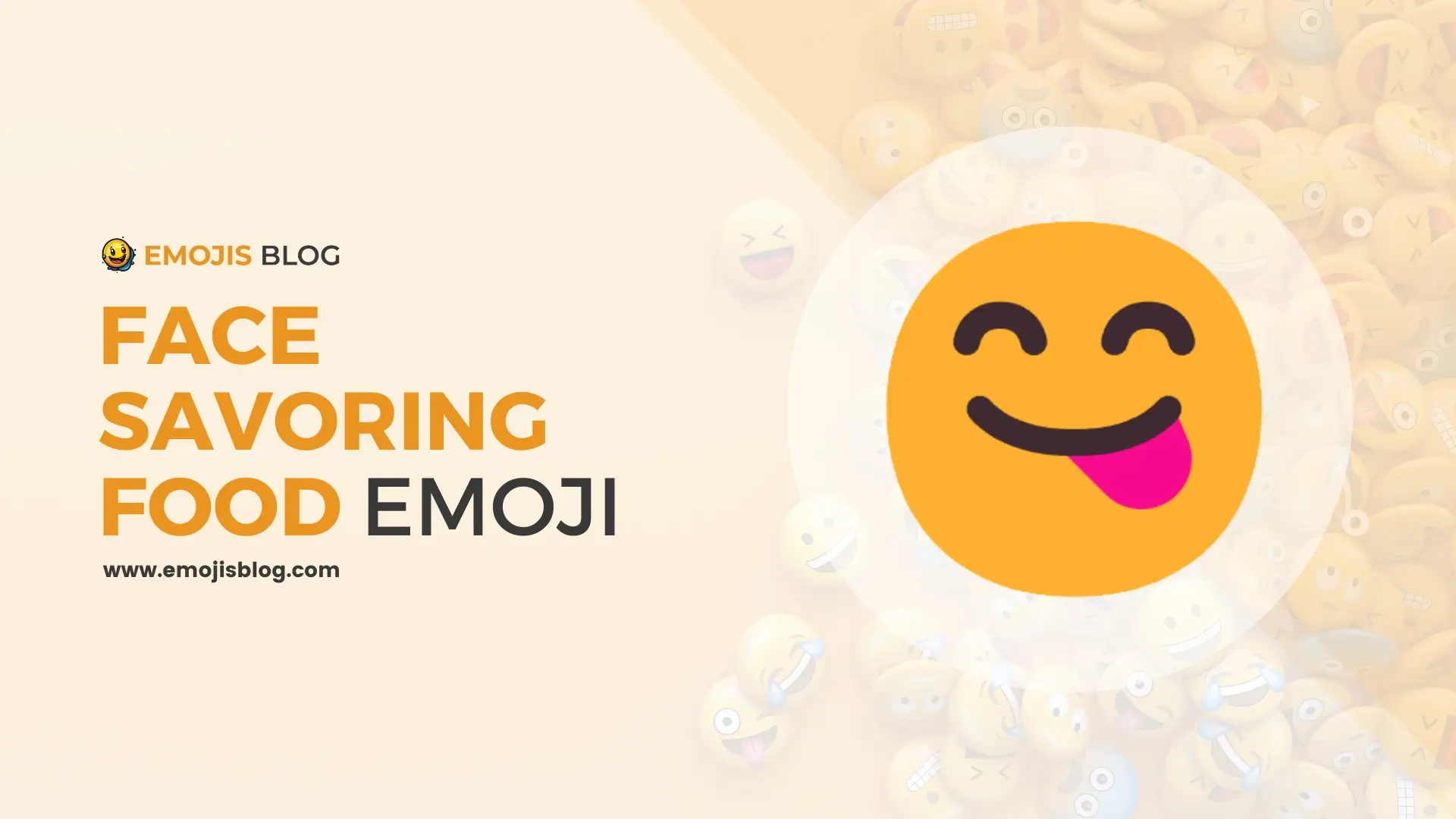What Does The Face Savoring Food Emoji 😋 Mean?
😋
Face Savoring Food Emoji 😋 Meaning
The 😋 emoji, officially known as the “Face Savoring Food” emoji, is a playful and expressive icon used primarily to convey enjoyment and pleasure in relation to eating or tasting food. It features a smiling face with squinted eyes and a tongue sticking out, often interpreted as licking its lips in anticipation or satisfaction. This emoji is versatile and is frequently used in digital communication to add a light-hearted, relatable tone when discussing meals, recipes, or cravings. Its usage extends beyond food-related contexts to express a sense of delight, excitement, or even cheeky mischief in various scenarios.
Technical Information
| Attribute | Details |
|---|---|
| Emoji | 😋 |
| Official Name | Face Savoring Food |
| Unicode Version | Unicode 6.0 (2010) |
| Emoji Version | Emoji 1.0 (2015) |
| Category | Smileys & Emotion |
| Subcategory | Face-Tongue |
| Codepoint | U+1F60B |
| Shortcode | :yum: (in some platforms) |
| Keywords | Face, food, delicious, savoring, yum, taste, tongue |
| Description | A smiling face with squinted eyes and tongue sticking out, often used to convey the enjoyment of food. |
| Variations | None |
| Cross-Platform Rendering | Rendered differently across various platforms like Apple, Google, Microsoft, etc., with slight design variations. |
Understanding the 😋 Emoji: A Comprehensive Guide
In the digital age, emojis have become a universal language, transcending cultural and linguistic barriers. One such popular emoji is the 😋 emoji. This article delves into the meaning, usage, and cultural significance of this emoji, offering a comprehensive understanding of its role in digital communication.
The Origin and Design of the 😋 Emoji
Historical Background
The 😋 emoji, commonly referred to as the “Face Savoring Food” emoji, was officially included in the Unicode Standard in 2010. It was part of the emoji release under Unicode 6.0, which marked a significant expansion of the emoji library.
Visual Description
This emoji depicts a smiling face with squinted eyes and a tongue sticking out, often portrayed licking its lips. The design varies slightly across different platforms, but the core elements remain consistent, conveying a sense of enjoyment and satisfaction.
Interpretation and Meaning
Primary Interpretation
The primary interpretation of the 😋 emoji is to express enjoyment related to food. It’s commonly used in the context of eating, tasting, or craving delicious food. The emoji conveys a playful acknowledgment of hunger or appreciation for a meal.
Extended Meanings
Beyond its direct association with food, the 😋 emoji can also signify a general sense of pleasure or excitement. It’s sometimes used to express a cheeky attitude or a sense of mischief in various contexts.
Usage in Digital Communication
In Text Messaging and Social Media
In text messages and on social media platforms, the 😋 emoji is often used to accompany messages about meals, recipes, or food experiences. It adds a playful and relatable tone to the conversation.
In Marketing and Branding
Brands frequently use the 😋 emoji in marketing campaigns related to food and dining. It resonates with audiences by evoking a sense of taste and enjoyment, making it effective for promoting restaurants, food products, and culinary events.
Cultural Variations and Misinterpretations
Cross-Cultural Perceptions
While widely recognized, the interpretation of the 😋 emoji can vary across cultures. In some contexts, it might be seen as childish or informal, whereas in others, it’s embraced as a fun and universal symbol of tasty food.
Potential Misinterpretations
Due to its playful nature, the 😋 emoji can sometimes be misinterpreted, especially in formal or unfamiliar contexts. It’s important to consider the audience and setting when using this emoji to avoid unintended connotations.
Conclusion
The 😋 emoji, with its wide-eyed, tongue-out expression, has become a staple in our digital vocabulary. It’s a versatile symbol that primarily celebrates our love for food but also extends to express joy and playfulness in various contexts. As with any form of digital communication, understanding the nuances and cultural differences associated with its use is key to effective and empathetic communication.

